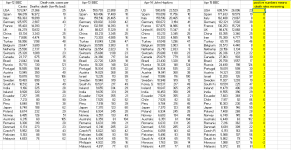Yes I have heard him banging on about a plan. Think most of the general public agree there shouldn't be any plan until that new cases are in the double digits.
There should be a plan and an expectation, just not published. We need to follow up on what other countries are doing who are ahead of us, then make decisions based on evidence.



